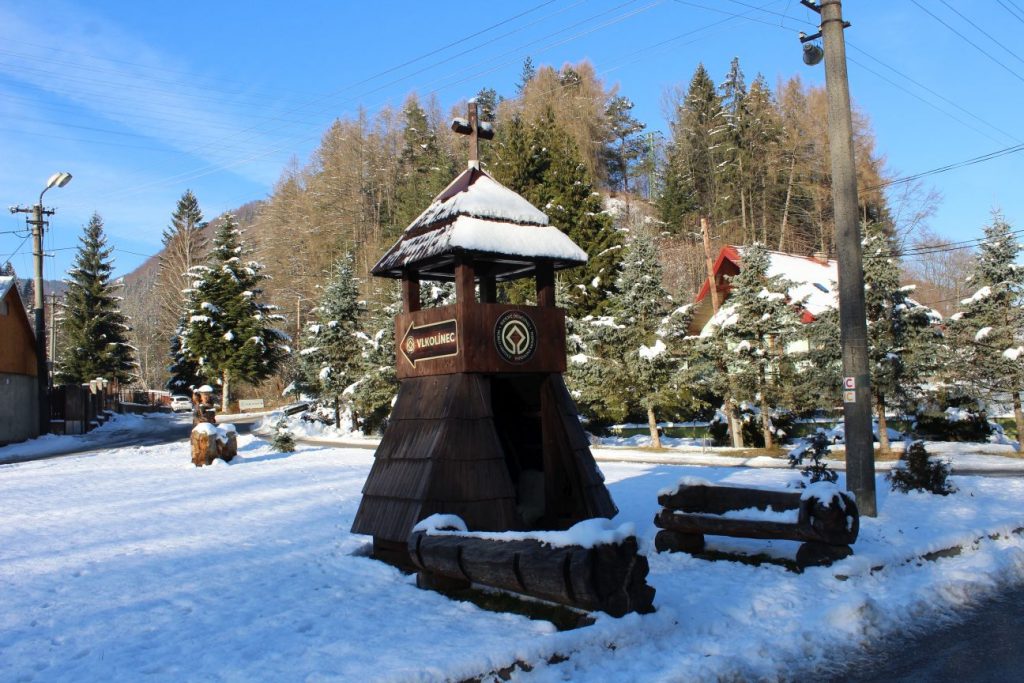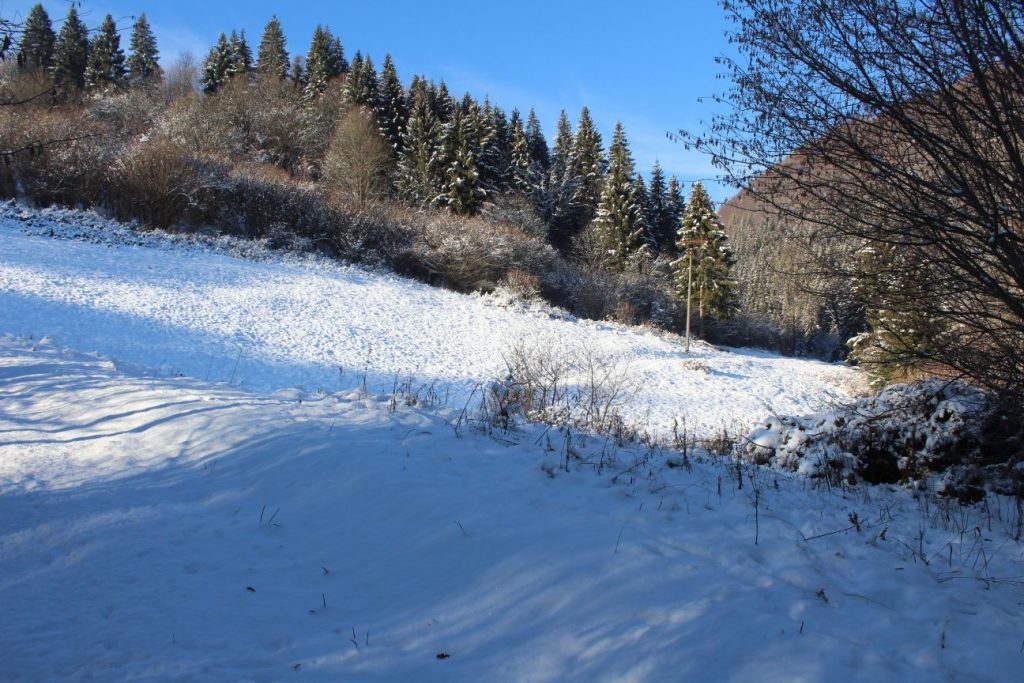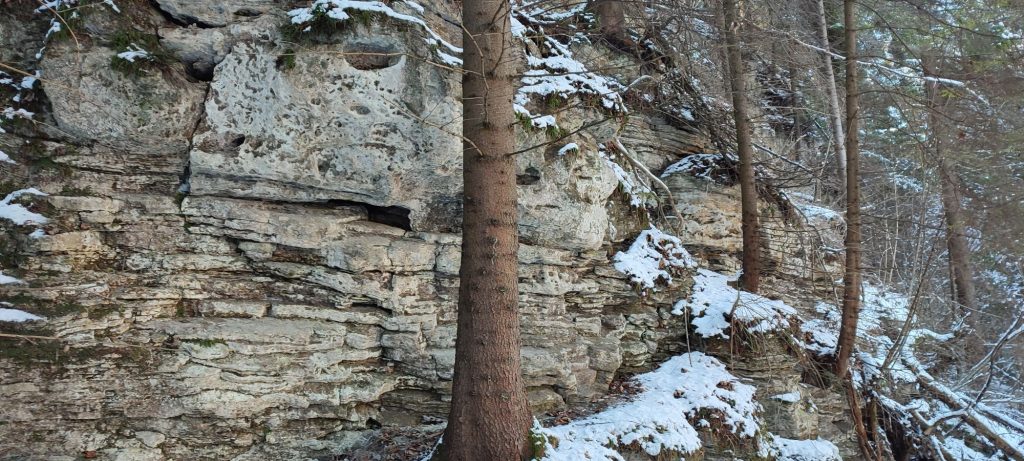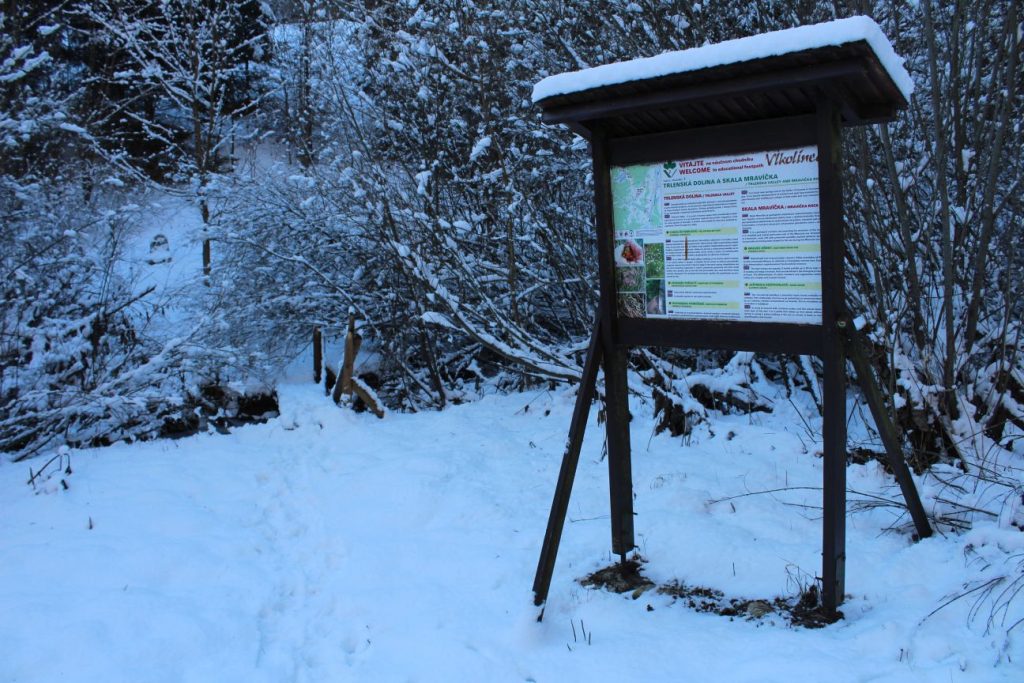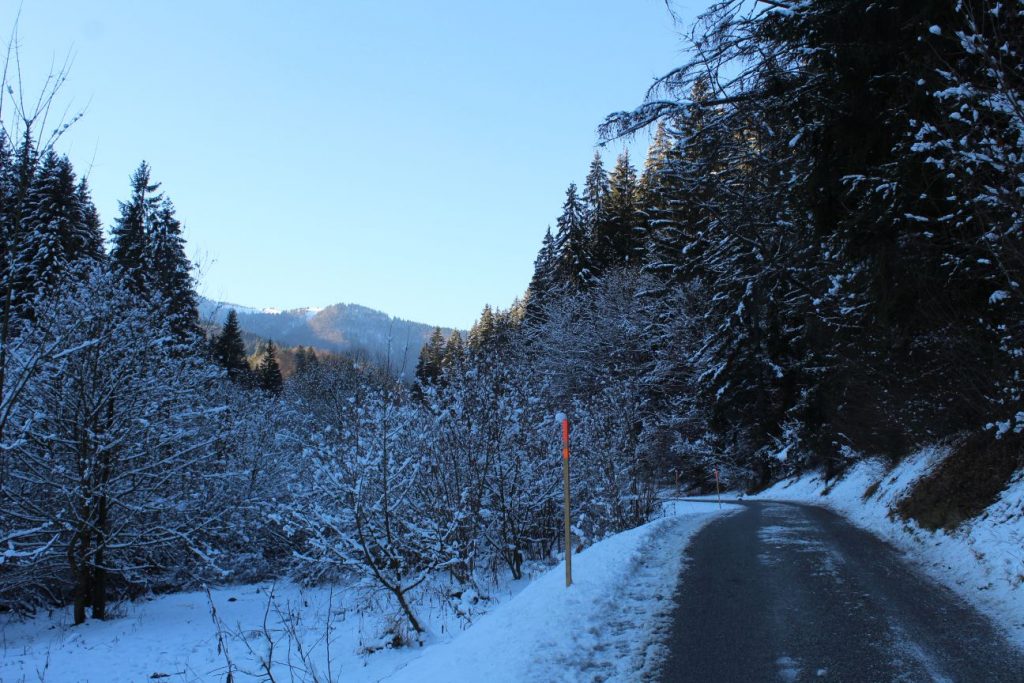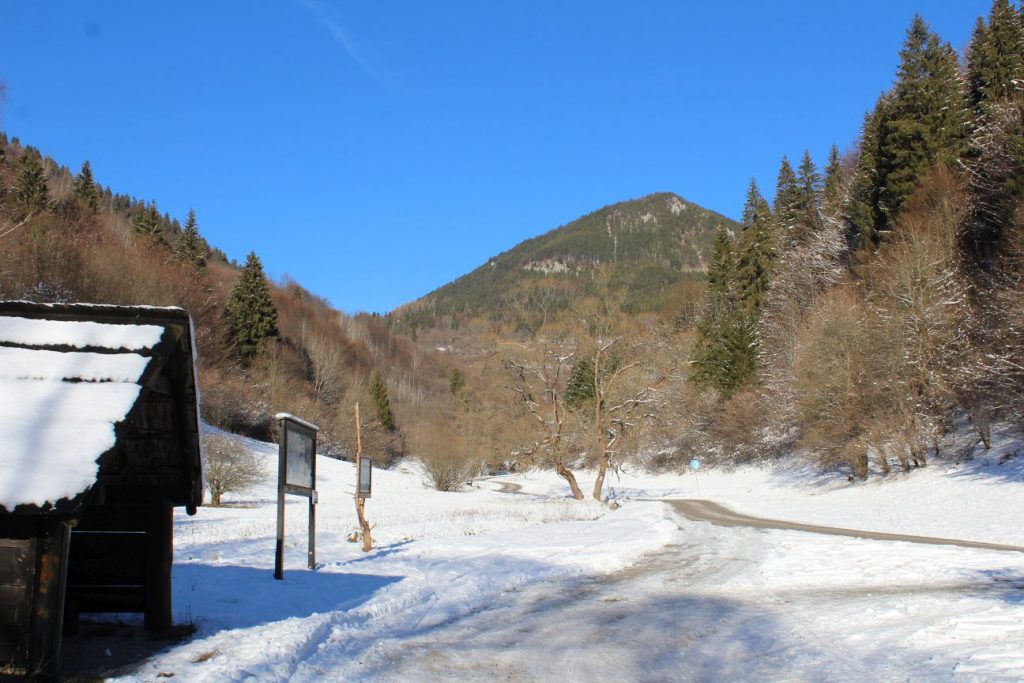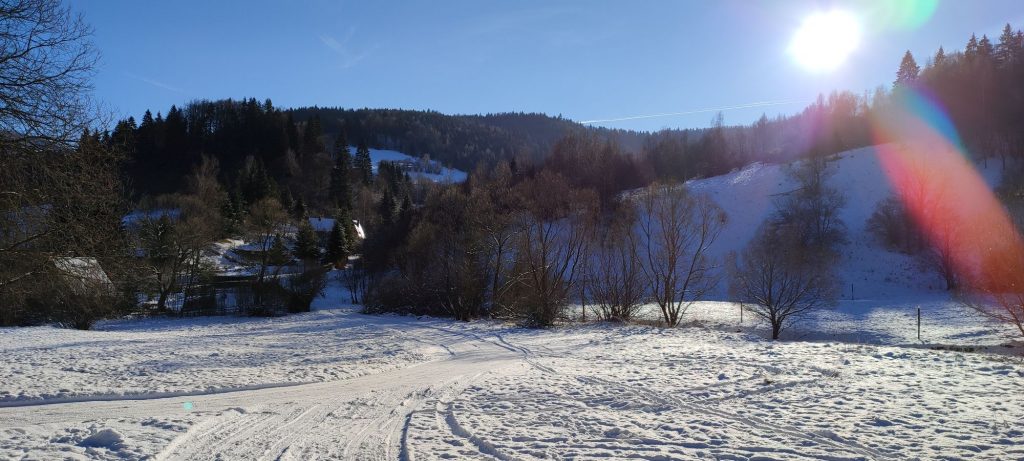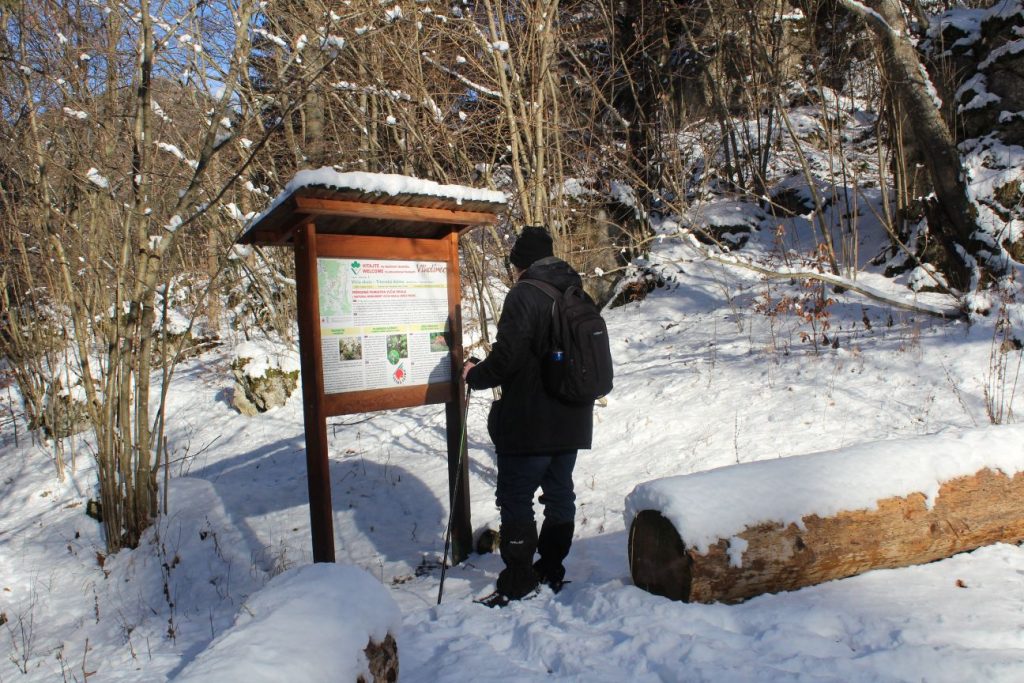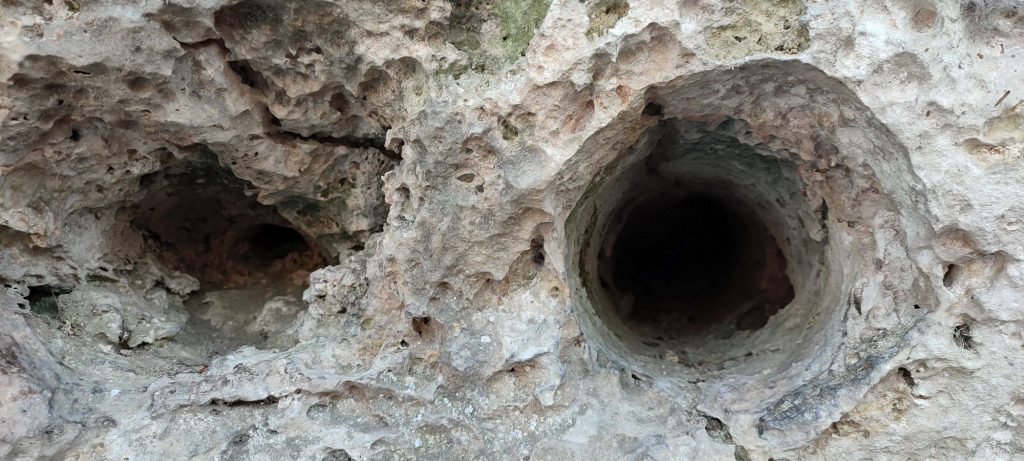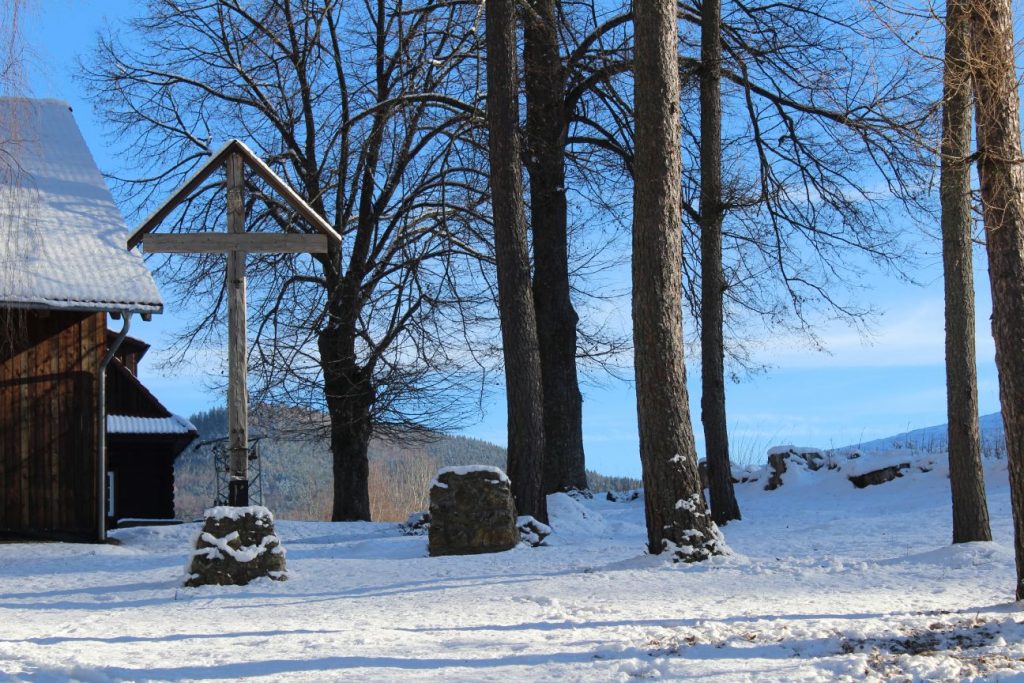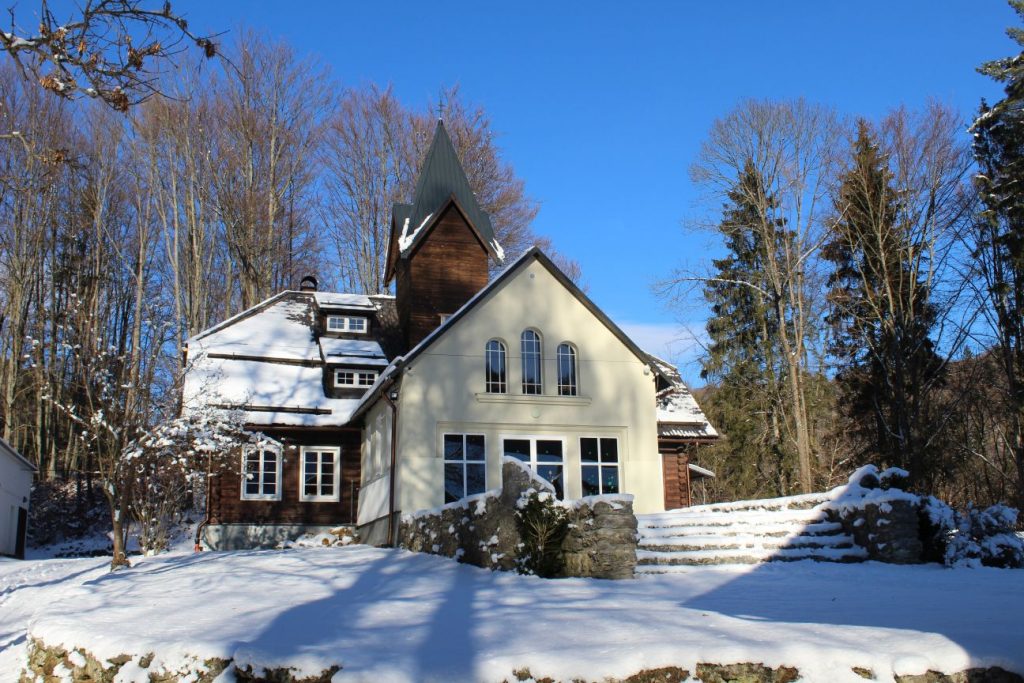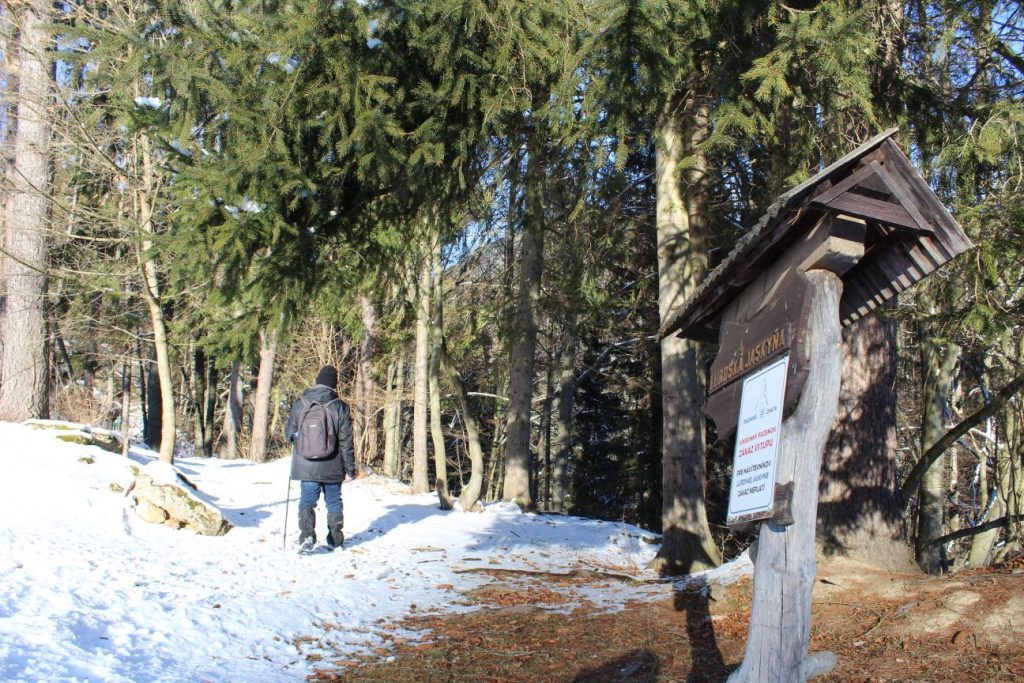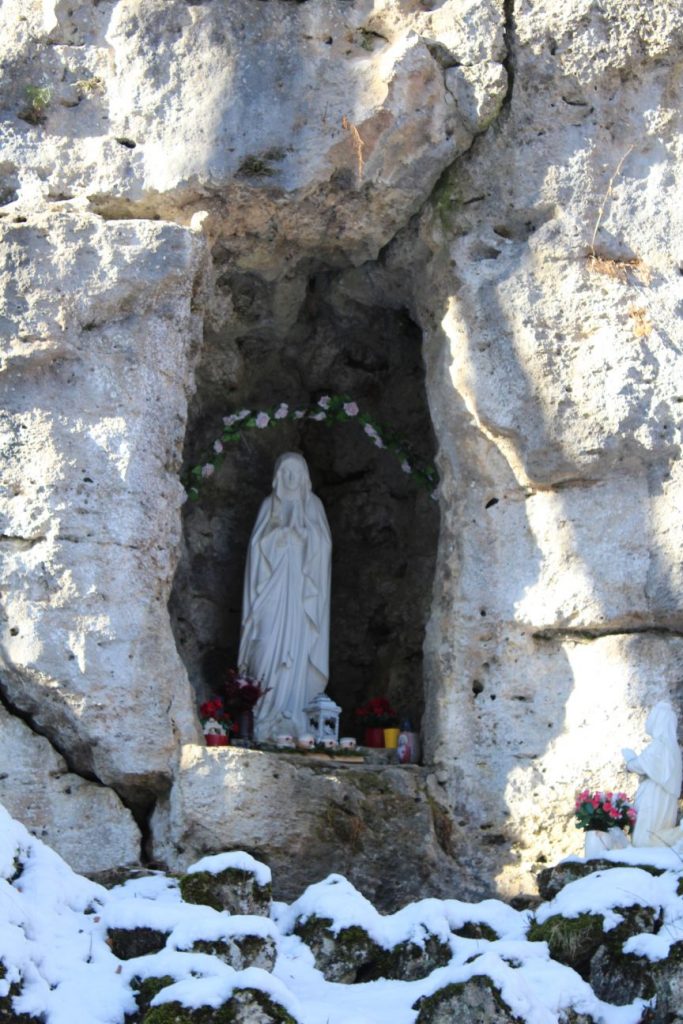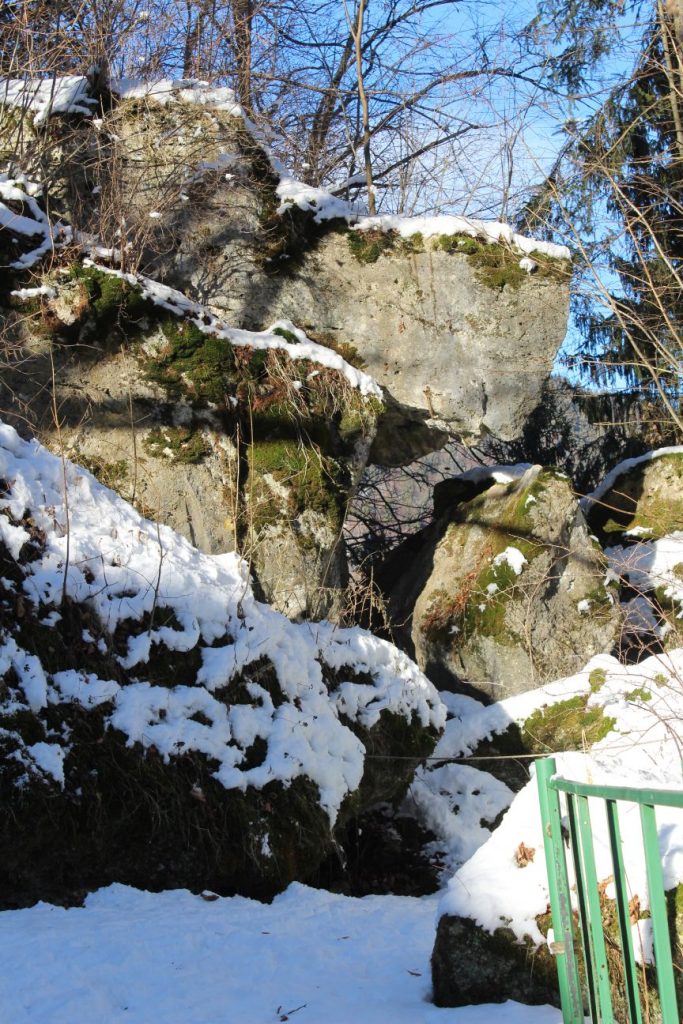Nature as Therapy: Rocks in the Trlenská Valley
It has already snowed outside and the nature is preparing for its winter rest under a blanket of snow. The snow-covered land pleases not only the eyes, but also the soul. Our next short trip will take us to an easily accessible place near Vlkolínec. We are going to look at what water is capable of creating over thousands of years and how rock formations can spark our imagination. To no longer keep you in suspense, we will tell you that we are going to take a trip to two natural rock formations situated in the Trlenská Valley.
Today, we are going to start in a bit of a non-traditional way and tell you something about why we do not need to worry in winter that by being in nature we could somehow damage what is under the snow. As we are wondering around our surroundings in accordance with the idea of #ObjavUdržateľnéSlovensko (DiscoverSustainableSlovakia), we need to think about everything that could be a threat to the nature and the environment around us, but also about everything we can do to help. There is one rule for winter, which is that every plant retreats under the ground. Not literally, but what we mean is that for winter, almost all plants growing in our country focus their energy, sap and everything they need for life from the above-ground parts of the plant to the root system, where these supplies wait until spring, so that when it gets warmer, the plant can sprout, grow and start receiving the energy from the sunlight as fast as possible. Last but not least, the snow which the plants are covered with will cushion our steps and it will protect the plants from being squashed. The snow also serves as a shield, which prevents the strong frost which could harm the root system of the plant, from getting to the plant at all. Perhaps we should just follow the example of our ancestors, who used to cut down trees in the woods mainly during winter, so the falling trees and the wood they pulled to the roads could not damage the soil cover and thus harm the growth in the woods. But enough theory, let’s start our winter hike.
To get to the beginning of our route, we use a bus of the public transport system, which takes us to Biely Potok, specifically to bus stop “Biely Potok“. This is also a bus stop of the suburban lines, for which the stop is called “Ružomberok,Biely Potok,Kovostav“ in the bus schedule. From the bus stop, we continue in the direction away from Ružomberok. However, we do not walk by the main road, but on the right, there is a road running parallel with the main road, next to the family houses. A few metres after passing by the last house, we leave the road and go to the Revúca river. There is a bridge for pedestrians, which we use to get to the other side. On the other side of the bridge, we continue to the right, where we pass by a picture model of the Korytnica railway locomotive. The road will lead us to an intersection with a wooden model of the Vlkolínec belfry, which serves as a resting zone, because there is a sitting area inside. We turn in the direction to the left, but we do not cross the bridge, with the road leading to Vlkolínec, and we continue further by the family houses. After a short while, the road ends and we continue on a forest road running mildly uphill. At the place where the road curves to the left, we get off the road and we continue directly towards the concrete post of the electricity line. The electricity line will lead us to a double concrete post. At this place, we continue uphill, slightly to the left, through bushes and trees. After entering the area with trees, we may notice a rocky cliff situated a few metres farther uphill. We will find the best possible path to the cliff, but we should not overestimate our abilities, because the terrain is steep and includes rocky sections. There are several different paths running here, just choose the one you want. The rocky cliff we arrive at is called “Skala Mravíčka“. We are able to see how the cliff was formed during the Mesozoic era and also how it was later disrupted by the flowing water, which has washed out different patterns in the cliff. From the cliff, we return to the double post, by which we walk down a steep slope towards the creek. In this area, you will find a small wooden bridge over the creek, which will help you get to the other side. As it is winter and the weight of the snow pushed the branches of a bush by the bridge into the trail, we decided to jump over the creek at a place situated a bit farther downhill. On the other side of the bridge, there is an educational panel, where we can read something about the rock we saw earlier. We continue to the left, up the Trlenská Valley, all the way to the intersection below Vlkolínec, where we will see a hiking shelter, another educational panel and a map. However, we do not continue to Vlkolínec, but we turn to the left, to the road running towards cabins. Passing by the cabins, the road leads us to an intersection. We go to the left, up the hill, and after a few metres, we will see an educational panel about the natural monument of Vlčia Skala (Wolf Rock). Through trees and bushes behind the panel, we walk to the rocky cliff which is situated here. We should not wonder around in this area too much, as the rock and the surrounding area are protected. We are just going to look at the interesting channels created by water in the travertine cliff. We return to the panel and continue uphill on the road. We arrive at a Jesuit complex and the plate on the gate informs us that we may enter, if we want to see the Lourdes cave. Greeting us right behind the gate is a wooden cross, at which we may stop and look. We continue further by the main building of the complex with the chapel, towards a small wooded area. At the periphery, we will see a direction sign which shows the direction to the Lourdes cave. After a few metres, we come to a place where there is a statue of Virgin Mary placed in a rock cavity of a cliff, at which we may “give thanks”, or just have a look. With a little imagination, we may notice a rock situated to the right of the statue, which is the reason why this cliff is called “Vlčia Skala” (Wolf Rock). When looking at it from the trail, it looks like a wolf head with an open mouth and teeth inside. If we use a little imagination, we can come up with plenty of stories about this rocky wolf head.
From the Jesuit complex, we return to the road in the Trlenská Valley. Those who did not have enough walking yet can make a detour to Vlkolínec, which is most beautiful when it is covered in snow. Otherwise, we continue down the valley, back to Biely Potok, from where we take a bus to the centre of Ružomberok.
The text was prepared by Milan Kolčák and Ján Benčík from the Ružomberok Information Centre.
This is the thirteenth article of the article series with subtitle Nature as Therapy.
Published: 16.12.2021

